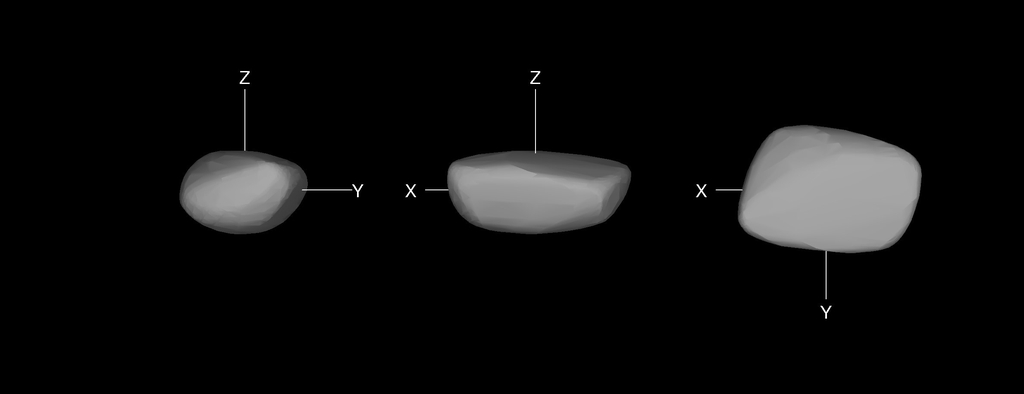Moon-Yeon Cheon “The rotation cycle is also faster…due to the difference in radiant energy emitted during the day and night”

[천문연 제공. 재판매 및 DB 금지]
(Daejeon = Yonhap News) Reporter Jeong Yoon-deok = Through a joint research with the Czech Republic’s Karel University, the asteroid ‘2012 TC4’ (hereinafter referred to as TC4) staggers and rotates like a spinning top just before it collapses (non-spindle rotation) for the first time. It was revealed on the 18th.
The co-workers also found that TC4 rotated faster.
TC4 reached a distance of 95,000 km and 50,000 km from Earth in 2012 and 2017.
The International Asteroid Warning Network promoted the TC4 joint observation campaign, and 21 astronomical observatories around the world tracked changes in TC4 brightness.
By analyzing this observational data, Cheonmunyeon and Karel University implemented a three-dimensional shape model of TC4, which confirmed that TC4 is a non-main axis rotating asteroid.
It was also found that the rotation cycle of TC4 was shortened by 18 seconds between 2012 and 2017.

Data showing the change in brightness of light reflected from the rotating TC4 surface. The blue dot is the observed luminous intensity data, and the black’+’ shows the difference between the mathematically calculated luminous intensity curve and the observed data. [천문연 제공. 재판매 및 DB 금지]
The co-workers cited the difference in radiant energy emitted during the day and night as the main cause of the change in the rotational state of TC4.
It is explained that the difference in the emitted energy creates a force called the’Yov effect’, which can gradually push the asteroid in one direction, eventually changing its orbit.
Dr. Moon-Yeon Chun, who led the study, said, “The research on the characteristics of near-Earth asteroids and the Yope effect is very important for early detection of asteroids with a high probability of Earth impact and in determining their precise orbits.” “We have actually confirmed the change in rotation of the planet and will greatly contribute to predicting the risk of asteroid impact on Earth in the future.”
The results of this study were published in the Astronomical Journal of the American Astronomical Society on the 11th of last month.
On April 14, 2029, Cheon Mun-yeon is also planning a direct exploration of another non-rotating asteroid, Apophis, which will pass 31,000 km above Earth.
Unauthorized reproduction-redistribution prohibited
2021/03/18 10:53 sent
